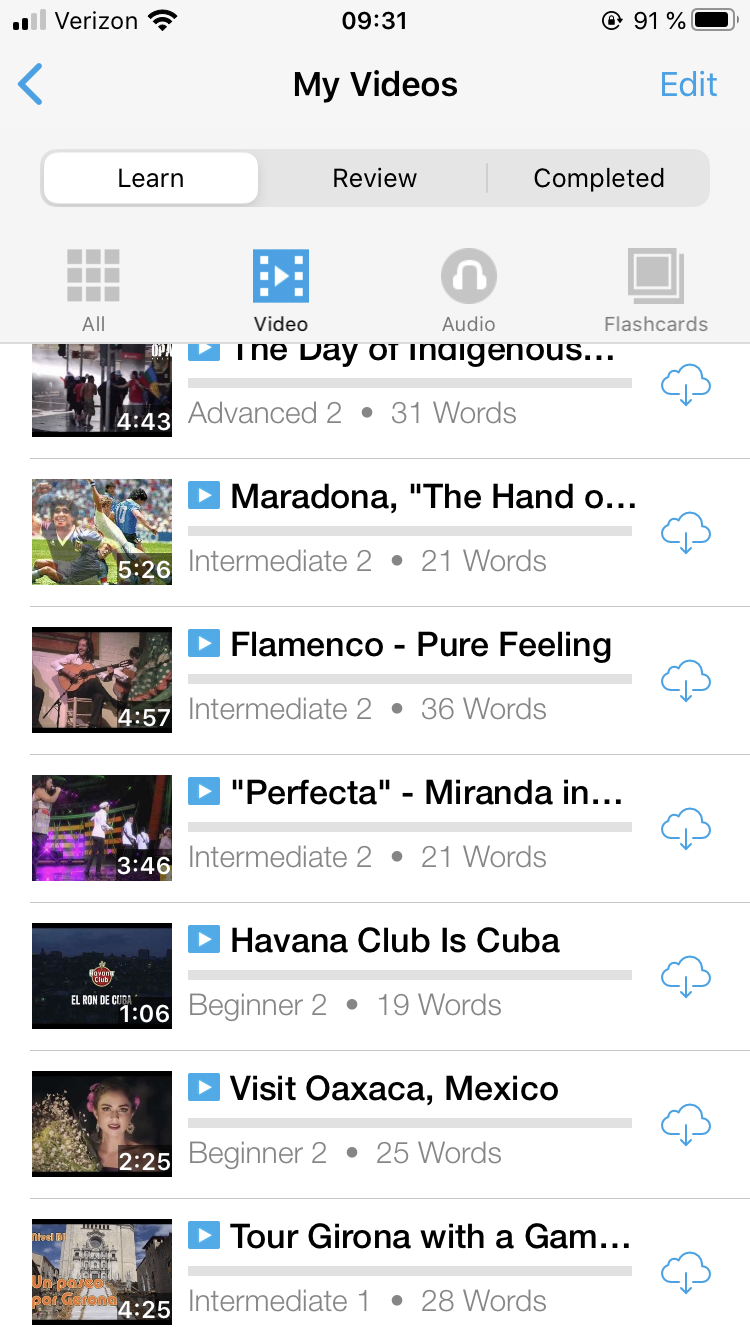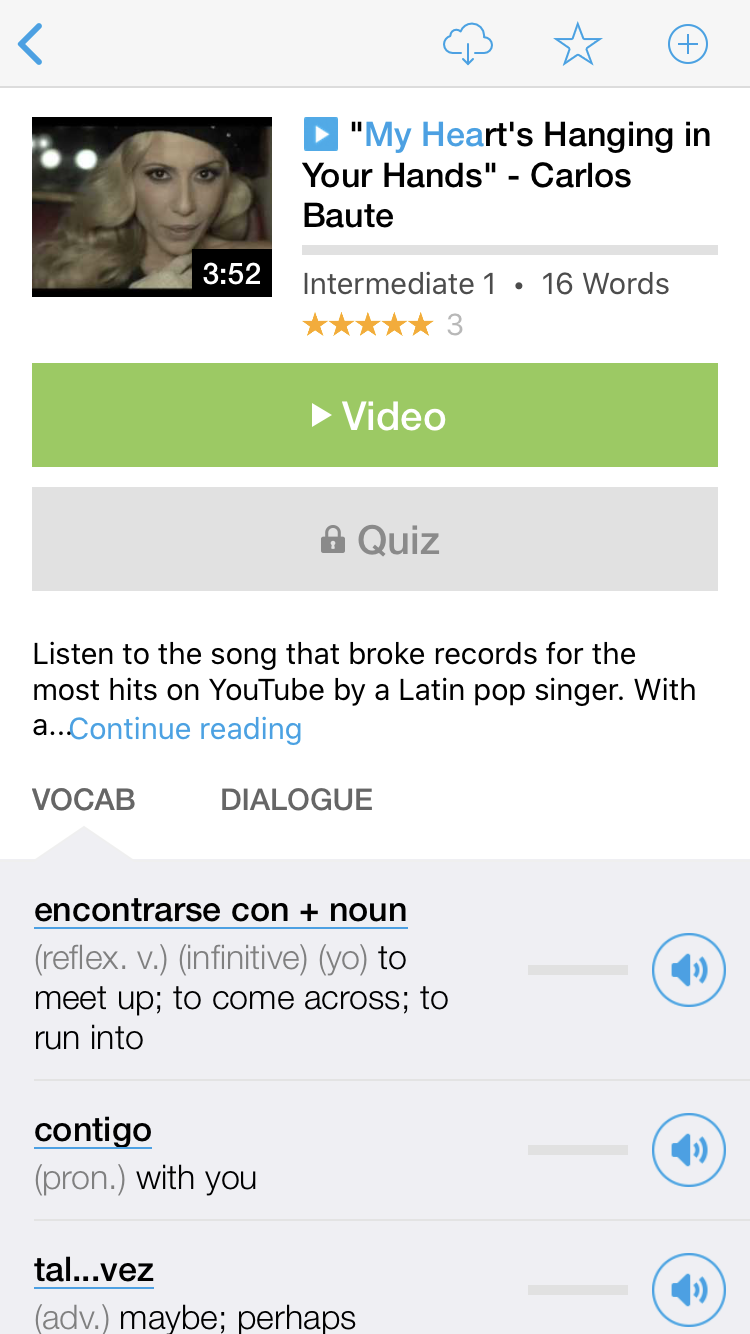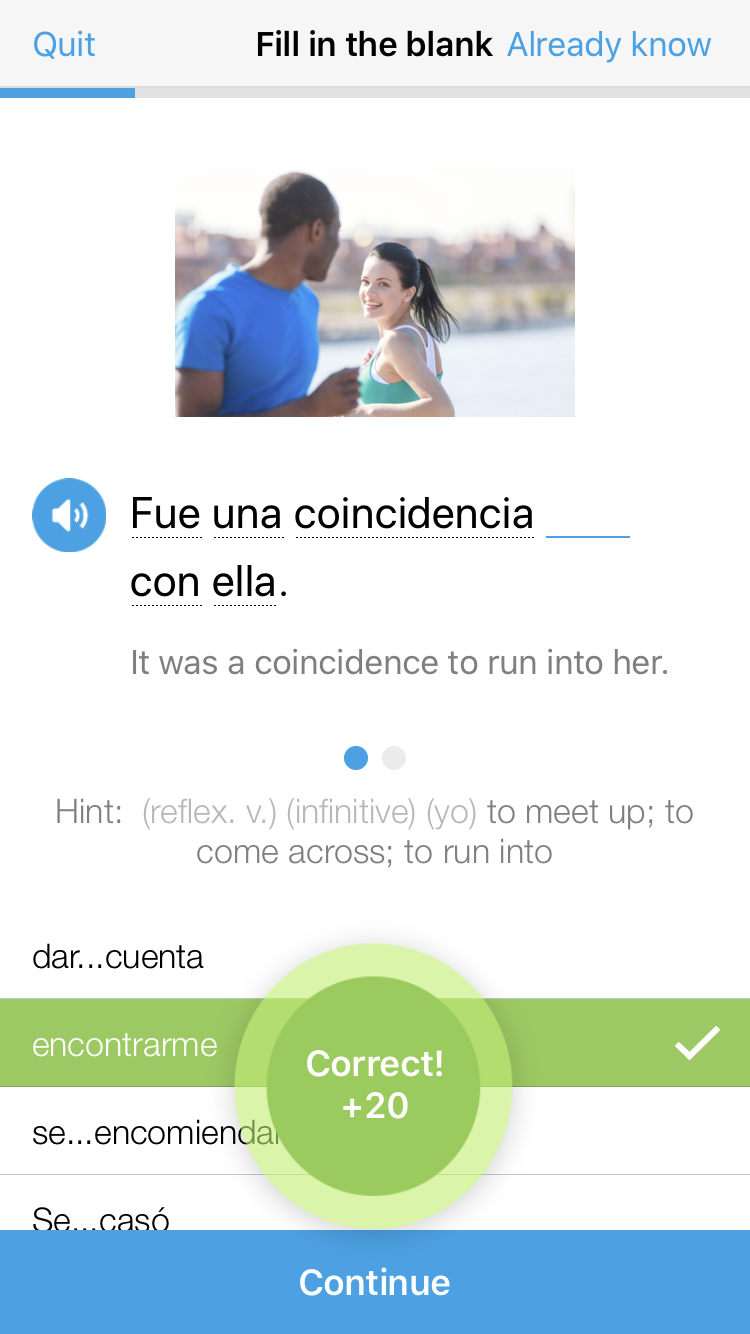
[ad_1]

All of us make errors when studying a brand new language.
Chances are high you’ve made among the ones on this checklist.
However as a substitute of letting a couple of errors break your confidence, you should utilize them as a studying alternative.
On this submit, you’ll study 22 of the commonest Spanish errors and find out how to keep away from them.
By studying a few of these frequent blunders and their corrections, you may converse with extra confidence, ease and accuracy!
Contents
Obtain:
This weblog submit is accessible as a handy and transportable PDF that you simply
can take anyplace.
Click on right here to get a replica. (Obtain)
1. Utilizing ser when speaking about age
In English we use the verb “to be” when speaking about age: “I’m 25 years outdated.” However in Spanish, the verb tener (to have) is used with age.
To say that you simply’re 25 years outdated, you’d say “Tengo 25 años”
(I’m 25). This interprets actually to “I’ve 25 years,” therefore the widespread mistake.
There are fairly a couple of different Spanish phrases that use the verb tener whereas their English counterparts use “to be.” Listed here are some widespread ones:
2. Mixing up ser and estar
This can be a crucial one as a result of it could actually change the which means of what you say. For instance, the Spanish adjective aburrido can imply “bored” or “boring” relying on the context.
In the event you say “Soy aburrido,”
it implies that you’re a boring particular person normally. However in case you say “Estoy aburrido,”
it implies that you’re feeling bored in the intervening time
Keep in mind that ser and estar each imply “to be,” however ser is mostly used for extra everlasting issues whereas estar is for short-term states or situations.
The complicated exception is when speaking in regards to the location of a sure place (estar) or the place an occasion takes place (ser). In these circumstances, it’s the other of what you may suppose:
¿Dónde está el hospital?
(The place’s the hospital?)
El concierto es en el estadio.
(The live performance is on the stadium.)
3. Not altering the ending on adjectives
One other widespread mistake is forgetting to alter the ending of an adjective relying on the gender of who/what you’re speaking about and if it’s singular or plural.
To say {that a} male is bored, you’d use aburrido. When speaking a few feminine, you’d use aburrida.
For a couple of feminine, you’d use aburridas
and for a couple of male or a mixed-gender group, you’d use aburridos.
That is additionally true for a lot of professions, equivalent to abogado
(male lawyer) and abogada
(feminine lawyer) or professor
(male instructor) and profesora
(feminine instructor).
4. Placing indefinite articles earlier than occupations
In the event you attempt to translate immediately from English to Spanish, “I’m a instructor” could be “Soy un professor.” However that is incorrect and reveals why direct translation isn’t at all times a good suggestion.
When stating occupations in Spanish, don’t use the indefinite article (un/una). Moderately, simply use the verb ser (to be) plus the occupation. For instance:
Soy profesora.
(I’m a instructor.)
Eres artista.
(You’re an artist.)
Él es ingeniero.
(He’s an engineer.)
5. Misplacing adjectives
In English, our adjectives come earlier than the noun: a large home, a blue shirt, a lovely smile. In Spanish, nonetheless, adjectives often come after the noun: una casa grande,
una camiseta azul,
una sonrisa bonita.
Remember that there are sure situations the place the adjective does come earlier than the noun in Spanish, and the place can really change the which means of the adjective. For instance:
Ellos tienen su propia casa.
(They’ve their personal home.)
No es el vestido propio para el evento.
(It’s not the proper gown for the occasion.)
Es la única talla que tenemos.
(It’s the solely measurement we’ve got.)
Valeria es una persona única.
(Valeria is a distinctive particular person.)
Es un gran músico.
(He’s a nice musician.)
Rusia es un país grande.
(Russia is a large nation.)
You’ll be able to study extra about Spanish adjective placement on this video:
6. Avoiding double negatives
Double negatives within the English language typically make us cringe as a result of they’re merely poor grammar. However in Spanish, double negatives thrive!
For instance, take the phrase “I didn’t write something.” In Spanish, you’d say “No escribí nada”
(Actually: “I didn’t write nothing”).
As a normal rule, Spanish phrases don’t combine optimistic and damaging phrases. So if in case you have a “no” earlier than your verb, you’ll solely ever see a damaging phrase after the verb. With optimistic verbs, you’ll use the optimistic equivalencies:
Take a better have a look at these examples to get a greater really feel for the idea:
No la he visto nunca.
(I’ve by no means seen her.)
No hay nadie aquí.
(There’s no person right here.)
Nunca cube nada en clase.
(He by no means says something in school.)
Ella tampoco hizo nada ayer.
(She didn’t do something yesterday both.)
7. Utilizing the plural kind with la gente (individuals)
In English the phrase “individuals” is a collective noun that should at all times be used with verbs within the third particular person plural: “Individuals are good-hearted.”
In Spanish, nonetheless, the phrase for “individuals” (la gente) is singular. Sure, it’s an odd idea to get used to at first, however when you get the dangle of it the phrase shouldn’t trigger you any extra bother.
Listed here are a couple of examples to get you extra comfy with the thought:
La gente de Perú es muy amable.
(The individuals of Peru are very pleasant.)
La gente se divierte en el parque.
(Individuals have enjoyable within the park.)
La gente mayor disfruta de la música clásica.
(Older individuals get pleasure from classical music.)
8. Overusing capitalization
Capitalization guidelines are very completely different between Spanish and English, with considerably much less capitalization on the Spanish facet. Phrases which might be capitalized in Spanish embrace:
• Names of individuals (Cristiano Ronaldo)
• Names of locations (Madrid, España)
• Names of newspapers and magazines (El País)
• The primary phrase of titles of flicks, books, articles, performs, and many others.
Phrases that aren’t capitalized in Spanish:
• Days of the week (lunes, martes, miércoles – Monday, Tuesday, Wednesday)
• Months of the yr (enero, febrero, marzo – January, February, March)
• Phrases in titles, besides the primary (“Cien años de soledad” — “100 Years of Solitude”)
• Languages (Estudio español. — I research Spanish.)
• Religions (Mis padres son católicos. — My dad and mom are Catholic.)
• Nationality (Soy estadounidense. — I’m American.)
9. Saying “Gracias para…”
Mixing up por and para is a quite common mistake for Spanish learners, as they each can imply “for.” Actually, they’re so generally confused that we created a complete submit about it.
One state of affairs the place they’re typically combined up is when saying thanks. To thank somebody for doing one thing for you or supplying you with one thing, we use por, not para. For instance:
¡Gracias por invitarme a tu fiesta!
(Thanks for inviting me to your occasion!)
Gracias por tu ayuda.
(Thanks on your assist.)
Gracias por el regalo tan hermoso.
(Thanks for the gorgeous reward.)
10. Complicated muy and mucho
It’s quite common for Spanish learners to combine up the phrases muy and mucho. Muy is an adverb meaning “very” or “actually.” It goes in entrance of an adjective or adverb and by no means modifications. For instance:
Hablas español muy bien.
(You converse Spanish very properly.)
Estoy muy cansada.
(I’m actually drained).
Camina muy rápido.
(He walks actually quick.)
Mucho can be utilized as an adjective meaning “loads,” “many” or “a lot.” On this case, it goes earlier than a noun and modifications kind (mucho, muchos, mucha or muchas) relying on the gender and variety of that noun:
Tengo mucha hambre.
(I’m actually hungry.)
Tomé mucho vino.
(I drank a variety of wine.)
¡Muchas gracias por la cena!
(Thanks a lot for dinner!)
It can be used as an adverb to change verbs, on this case translating to “loads” and going after the verb (with out altering kind). For instance:
Ella trabaja mucho.
(She works loads.)
Right here’s a fast overview of the distinction between muy and mucho:
11. Falling for false buddies
There are a variety of “false buddies” between Spanish and English. These are phrases that sound the identical however have completely different meanings. Listed here are a couple of that usually trigger (fairly embarrassing) errors:
- Embarazada
means “pregnant.” “Embarrased” in Spanish is avergonzado
or tener verguenza
(to be embarrassed). - Excitado
means “excited,” however in a sexual method. To say that you simply’re excited in a non-sexual method, use emocionado
as a substitute (or emocionada
in case you’re feminine). - Preservativo
sounds loads like “preservative,” but it surely really means “condom.” If you wish to know if a sure meals or magnificence product accommodates preservatives, use conservante
to keep away from a clumsy second. - Dato
may seem like the phrase “date,” but it surely really means “truth.” If somebody asks you for tus datos, they’re asking on your private data. If you wish to ask somebody out on a date, use cita
as a substitute.
12. Utilizing the mistaken prepositions
As we’ve already seen with por and para, Spanish prepositions are difficult. They typically don’t translate immediately between English and Spanish, so we’ve got to memorize which prepositions go together with which verbs.
Listed here are a couple of verb/preposition pairs that create a variety of errors amongst Spanish learners:
13. Including prepositions the place they’re not wanted
Along with utilizing the mistaken prepositions, Spanish learners typically add prepositions the place there shouldn’t be any. Listed here are a couple of of the commonest examples:
- Buscar: This verb means “to search for,” with the preposition included within the which means. So it is best to by no means say “buscar por” or “buscar para” when speaking about in search of one thing or somebody. For instance: Estoy buscando mis llaves
(I’m in search of my keys). The identical goes for esperar (to attend for). - Pedir: That is one other verb that has the “for” included within the which means. So we are able to say “Ella le pidió ayuda a su vecina”
(She requested her neighbor for assist) and it’s completely right. (Pedir also can imply “to order,” as in “to order a salad.”) - Intentar: To say “to strive” or “to try” to do one thing, we are able to use intentar (with no preposition) or tratar de. This causes some confusion, as one makes use of a preposition and the opposite doesn’t. For instance: Intenté abrir la puerta pero estaba cerrada
(I attempted to open the door but it surely was locked).
14. Forgetting the non-public a
The non-public a is a preposition we use in Spanish when a sentence’s direct object is an individual. It’s typically forgotten by English audio system just because it doesn’t exist in Spanish, and it doesn’t have a direct translation. For instance:
Voy a visitar a mis abuelos.
(I’m going to go to my grandparents.)
As you may see, there’s no equal phrase within the English translation. However nonetheless, it’s required in Spanish. Listed here are a couple of extra examples:
Necesito llamar a mi amigo.
(I have to name my good friend.)
Los estudiantes respetan a su maestra.
(The scholars respect their instructor.)
Discover that when the direct object is changed with a direct object pronoun, the non-public a disappears:
Los estudiantes la respetan.
(The scholars respect her.)
15. Ordering meals utilizing “Puedo tener…?”
There are some ways to order meals or drinks in Spanish. However “Puedo tener…?” isn’t one among them. This can be a direct translation of the English phrase “Can I’ve…?” and it may be heard in lots of eating places in touristy areas of the Spanish-speaking world.
Sure, the server will perceive what you’re saying. However strive utilizing one among these phrases as a substitute if you wish to sound much less like a vacationer and extra like a local speaker:
• Me da…
(Are you able to get me…?)
• Me gustaría…
(I’d like…)
• Para mí…
(I’ll have…)
• ¿Puede traerme…?
(May you deliver me…?)
16. Mixing up phrases that sound comparable
Similar to in English, there are lots of pairs and teams of phrases in Spanish that sound comparable and are subsequently typically combined up. These are referred to as homophones, and it helps to know among the most typical:
• Hambre
(starvation), hombre
(man) and hombro
(shoulder)
• Pimienta
(pepper, as in salt and pepper) and pimiento
(pepper, as within the vegetable)
• Cabello
(hair) and caballo
(horse)
• Cansado
(drained) and casado
(married)
• Hola
(hi there) and ola
(wave)
17. Saying “Hice un error”
There’s nothing worse than making a mistake when attempting to acknowledge a earlier mistake! In Spanish, we don’t use hacer (to do/make) to say that we’ve made a mistake.
As a substitute, we use the verb cometir
(to commit). Listed here are some examples:
Cometí un error. ¡Por favor, perdóname!
(I made a mistake. Please forgive me!)
Por favor corrígeme cuando cometa un error. Quiero mejorar mi español.
(Please right me after I make a mistake. I need to enhance my Spanish.)
Cometer errores es una parte pure del aprendizaje de un nuevo idioma.
(Making errors is a pure a part of studying a brand new language.)
18. Utilizing gustar incorrectly
Gustar is a complicated verb as a result of it features otherwise than its English which means. Whenever you say “Me gusta leer,” it actually implies that studying is pleasant to you.
As a result of the verb gustar is definitely speaking in regards to the factor or the exercise, not the one that likes the factor or the exercise, you could change its kind relying on the gender and variety of the noun that comes after it. For instance:
Me gustan las galletas. (I like cookies.)
Les gusta la playa. (They just like the seashore.)
Me gustas. (I such as you. — with a romantic connotation)
There are lots of different verbs like this in Spanish equivalent to encantar (to thrill) and preocupar (to fret)—try this checklist of 100 of them right here.
In the event you’re nonetheless confused about find out how to use gustar, you may hearken to this foolish music that packs a complete lesson into lower than two minutes:
19. Responding to gustar incorrectly
One other widespread mistake involving the verb gustar is saying, for instance, “Yo me gusta…” when it must be “A mí me gusta…”. That is solely crucial while you need to emphasize what you want in distinction to another person. For instance:
No me gustan las peliculas de terror.
(I don’t like horror motion pictures.)
A mí me gustan mucho.
(I like them loads.)
Equally, we are able to’t reply with “Yo también” (Me too) or “Yo tampoco” (Me neither) when somebody tells us what they like. As a substitute, we should say “A mí tambien”
or “A mí tampoco.”
20. Forgetting accents
Accents in Spanish are necessary as a result of they will inform you how a phrase must be pronounced. They’ll additionally change the which means of a phrase utterly. For instance:
• el
(the) vs. él
(he)
• si
(if) vs. sí
(sure)
• porque
(as a result of) vs. por qué
(why)
• como
(I eat) vs. cómo
(how)
• papa
(potato) vs. papá
(dad)
Don’t get caught saying one thing like “My potato is a lawyer.” Keep in mind to make use of your accents after they’re wanted!
21. Saying the h sound
After all, there are lots of pronunciation errors that occur while you’re studying a brand new language. However probably the most widespread in Spanish is with phrases with h, particularly when the h is in the course of the phrase.
It’s because in Spanish, the h is silent. Take heed to the way it’s pronounced—or, extra precisely, not pronounced—in these phrases:
• hambre
(starvation)
• hola
(hi there)
• zanahoria
(carrot)
• vehículo
(car)
• ahorros
(financial savings)
Listen everytime you’re announcing a Spanish phrase with an h and also you’ll sound far more like a local speaker!
22. Forgetting to make use of the subjunctive
This final one is for extra superior Spanish learners. Even when your Spanish is actually good, forgetting to make use of the subjunctive temper will be an apparent clue that you simply’re not a local speaker.
The subjunctive is used to precise doubt, uncertainty, need, feelings and varied hypothetical or non-factual conditions. Listed here are some examples:
Ojalá sepa la respuesta.
(I hope he is aware of the reply.)
Es bueno que tu familia se lleve tan bien.
(It’s good that your loved ones will get alongside so properly.)
No creo que el banco esté abierto hoy.
(I don’t suppose the financial institution is open at this time.)
Estoy buscando un profesor que hable español con fluidez.
(I’m in search of a instructor who’s fluent in Spanish.)
Espero que hayas disfrutado la comida.
(I hope you’ve loved the meals.)
To keep away from the widespread mistake of utilizing the indicative when the subjunctive is required, attempt to study the triggers for utilizing the subjunctive. You too can observe and familiarize your self with widespread subjunctive phrases.
By studying to keep away from these widespread errors, you’ll enhance your self as much as a complete new degree of Spanish.
You’ll be even much less prone to make widespread errors in case you use an immersive program to study the language, like FluentU. This and different immersion packages allow you to hear Spanish because it’s really utilized by native audio system, permitting you to study naturally and in context.
Obtain:
This weblog submit is accessible as a handy and transportable PDF that you simply
can take anyplace.
Click on right here to get a replica. (Obtain)
And One Extra Factor…
In the event you’ve made it this far meaning you in all probability get pleasure from studying Spanish with participating materials and will then love FluentU.
Different websites use scripted content material. FluentU makes use of a pure strategy that helps you ease into the Spanish language and tradition over time. You’ll study Spanish because it’s really spoken by actual individuals.
FluentU has all kinds of movies, as you may see right here:
FluentU brings native movies inside attain with interactive transcripts. You’ll be able to faucet on any phrase to look it up immediately. Each definition has examples which have been written that will help you perceive how the phrase is used. In the event you see an fascinating phrase you don’t know, you may add it to a vocab checklist.
Evaluation a whole interactive transcript beneath the Dialogue tab, and discover phrases and phrases listed beneath Vocab.
Study all of the vocabulary in any video with FluentU’s strong studying engine. Swipe left or proper to see extra examples of the phrase you’re on.
The perfect half is that FluentU retains observe of the vocabulary that you simply’re studying, and provides you additional observe with tough phrases. It will even remind you when it’s time to overview what you’ve realized. Each learner has a really personalised expertise, even when they’re studying with the identical video.
Begin utilizing FluentU on the web site together with your pc or pill or, higher but, obtain the FluentU app.
[ad_2]



